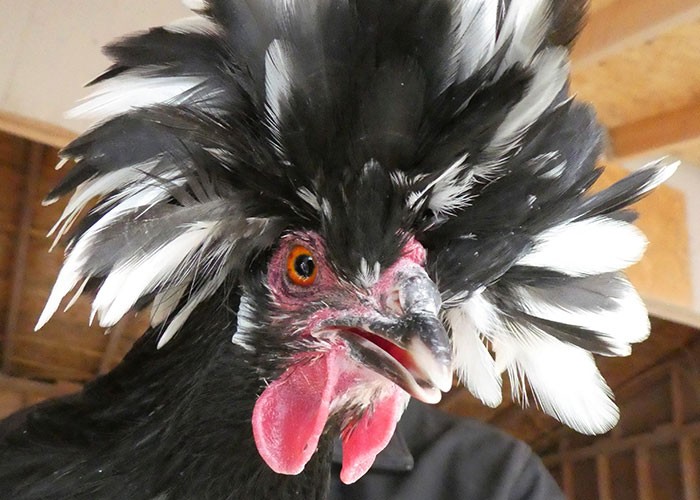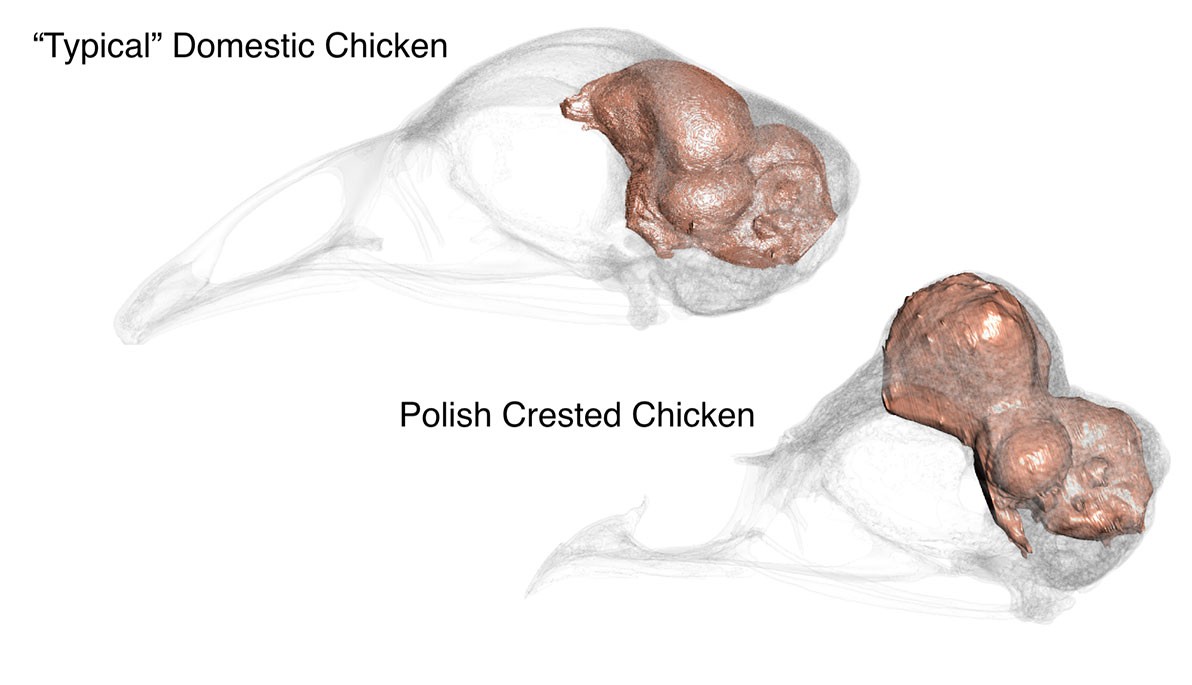News
Beyond the Bones: Brainy Birds
July 18, 2023
Pictured: Scans show the odd, dumbbell-shaped brain of a Polish crested chicken.
Across land, air, and sea, this summer New York Tech News is highlighting some of the recent studies published by the College of Osteopathic Medicine’s (NYITCOM) Department of Anatomy. The “Beyond the Bones” series is a snapshot of just a few of the projects helping to shape scientific understanding about evolution.
In this latest installment, a team of researchers explains why a specific breed of domesticated chicken could help to explain how birds—and possibly other animals—evolved to have such different structures and shapes.
In 2021, Assistant Professor Akinobu “Aki” Watanabe, Ph.D., became the first New York Tech faculty member to receive the National Science Foundation’s (NSF) highly coveted Faculty Early Career Development Program (CAREER) award with his research project “Evo-Developmental Interactions of Craniofacial and Brain Anatomy.”
The grant-funded research analyzes the emergence of novel brain and skull configurations and how the brain and skull interact with each other in birds, which, like humans, have (proportionately) large brains capable of higher cognitive functions. A better understanding of these interactions may allow clinicians to prevent and treat future neurological and cranial birth defects, which can cause developmental delays, physical disabilities, and even death.
On May 10, the project’s first paper was published in the Journal of Anatomy, suggesting that the oddly shaped brains of a specific breed of domesticated chicken could serve as an animal model to study how birds, and perhaps animals in general, came to have different brain shapes and structures.
While many studies detail how brains have developed or evolved in mammals, including humans, additional studies in other animals, like birds, are needed to help explain how brains have evolved across all vertebrates (animals with backbones).

Polish crested chicken with its unique “crown” of feathers.
Watanabe and his team analyze the odd brains of white-crested Polish chickens, which are shaped like dumbbells. Using micro-computed tomography (micro-CT) scanning and mathematical shape modeling, the researchers reconstructed the chickens’ brains and compared their shapes to typical chickens and other birds.
While scientists were already aware of the crested chickens’ strange brain shape, the new study finds there is a wide range of brain shapes within this single breed, including ones that show a super-stretched forebrain. Given their unique brain morphology, Watanabe now proposes using white-crested Polish chickens as a model to study how birds have evolved diverse brain shapes and structures over time.
Much of the high-tech research was completed in the Department of Anatomy’s Visualization Center. Other researchers included NYITCOM graduate Sylvia Marshall (D.O. ’23), who is starting an ophthalmology residency at the University of Buffalo, and a paleontologist from the American Museum of Natural History, of which Watanabe is also affiliated.
Learn more about innovative research from the Department of Anatomy’s esteemed faculty.




_Thumb.jpg)
